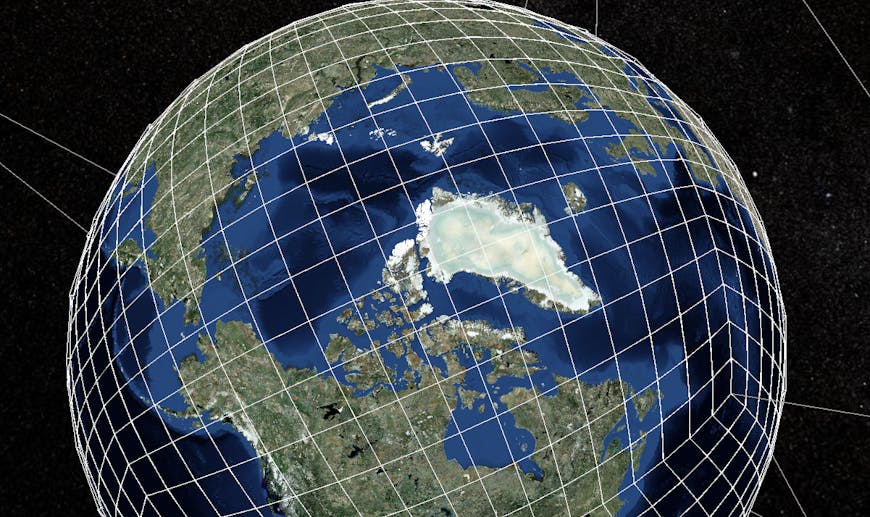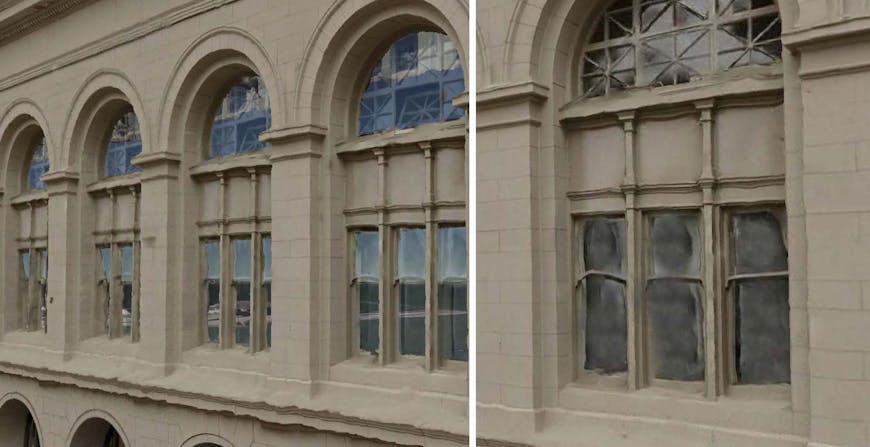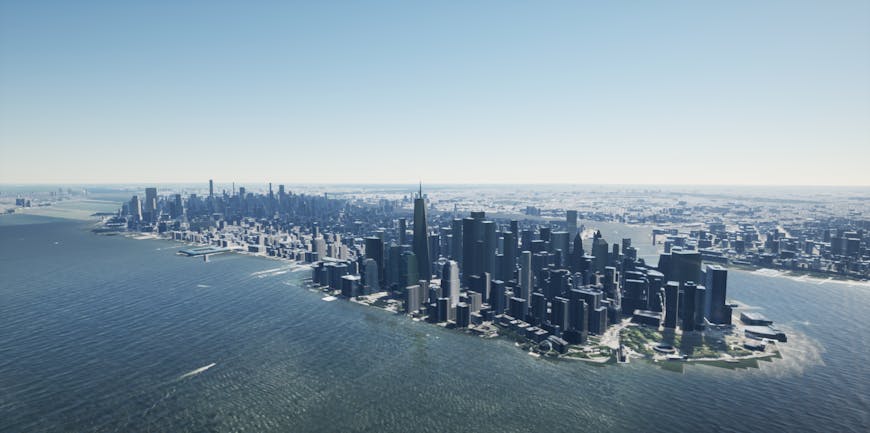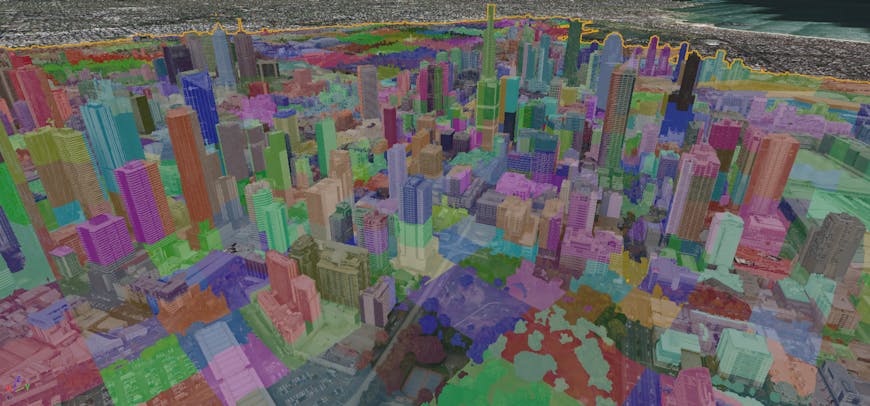Cesium Releases in December 2021
This month we made the 3D Tiles Next open specification available for community feedback. 3D Tiles Next is a set of extensions to allow the developer community to better stream semantic metadata efficiently, run massive simulations and analytics via spatial indexes, and integrate with the glTF software and extension ecosystem. It's available now in CesiumJS. Please share insights from your implementation experience in the 3d-tiles repo on GitHub.

3DTILES_bounding_volume_S2 provides minimal distortion at the poles, especially compared to quadtree subdivision, where tiles near the poles become very thin.
CesiumJS 1.88 Release
CesiumJS 1.88 is now available. Most importantly, since the 1.87 release we’ve added experimental implementations of 3D Tiles Next. Highlights of that addition include:
- Added Sandcastle examples for 3D Tiles Next: Photogrammetry Classification, CDB Yemen, and S2 Globe
- Added
ModelExperimental, a new experimental architecture for loading glTF models. It is disabled by default; setExperimentalFeatures.enableModelExperimental = trueto enable it. - Added
CustomShaderclass for stylingCesium3DTilesetorModelExperimentalwith custom GLSL shaders - The following extensions are supported:
3DTILES_content_gltffor using glTF models directly as tile contents3DTILES_metadatafor adding structured metadata to tilesets, tiles, or groups of tile contentEXT_mesh_featuresfor adding feature identification and feature metadata to glTF models3DTILES_implicit_tilingfor a compact representation of quadtrees and octrees3DTILES_bounding_volume_S2for S2 bounding volumes3DTILES_multiple_contentsfor storing multiple contents within a single tile
See the changelog for a full list of updates and links to the discussion & code on each one. You can also subscribe to the Cesium roundup release thread on the community forum to get notifications about our monthly releases.

With 3D Tiles Next, metadata can vary even more frequently than geometry, meaning it can be mapped to glTF’s PBR materials. Right: Photogrammetry of San Francisco Ferry Building from Aerometrex, tiled with 3D Tiles. Left: The classification of building features, such as wall or window, determines how the material properties are rendered, making the windows translucent.
Cesium for Unreal Updates
We made a number of updates to Cesium for Unreal this month, including adding support for two 3D Tiles Next extensions. Notably, we've also added the ability to drape raster overlays on any kind of 3D Tiles tileset, not just quantized mesh terrain. Highlights of the release include:
- Added support for the
3DTILES_implicit_tilingextension. - Added support for the
3DTILES_bounding_volume_S2extension. - Added support for raster overlays, including clipping polygons, on any 3D Tiles tileset.
- Added support for external glTF buffers and images.
- Clipping polygon edges now remain sharp even when zooming in past the available geometry detail.
Cesium3DTilesetnow has options for enabling custom depth and stencil buffer.- Added
CesiumDebugColorizeTilesRasterOverlayto visualize how a tileset is divided into tiles. - Exposed raster overlay properties to Blueprints, so that overlays can be created and manipulated with Blueprints.
Check the Cesium for Unreal changelog and the Cesium Native changelog for the full list of updates.

Bing Maps imagery draped over Cesium OSM Buildings in Manhattan, made possible by the added support for draping raster overlays on any 3D Tiles tileset.

A simple raster overlay that adds a random 50% opaque color to every tile, which is useful for visualizing how a tileset is broken up into tiles. This capability, added to Cesium Native, is shown here on a 3D Tiles tileset of Melbourne.
Building the Open Metaverse
Cesium CEO Patrick Cozzi and Marc Petit, VP and general manager of Unreal Engine at Epic Games, have launched a new podcast where technologists share their insights about how the community is building the open metaverse together.
They’ve already hosted a remarkable group of guests, including
- Matthew Ball, author of The Metaverse Primer,
- Samantha G. Wolfe, founder of PitchFWD,
- Neil Trevett, president of the Khronos Group,
- Ruth Suehle, director of community outreach at Red Hat,
- David Morin, executive director of the Academy Software Foundation,
- Bill Vass, VP of engineering at AWS,
- Nadine Alameh, CEO of OGC, and
- Vladimir Vukićević, director of lightweight XR at Unity Technologies.
If you're interested in a visionary take on the metaverse, discussions about the the technology it will be built on, and open standards that will make it possible, this is the place to geek out. Listen and subscribe for future episodes. There’s much more to come!